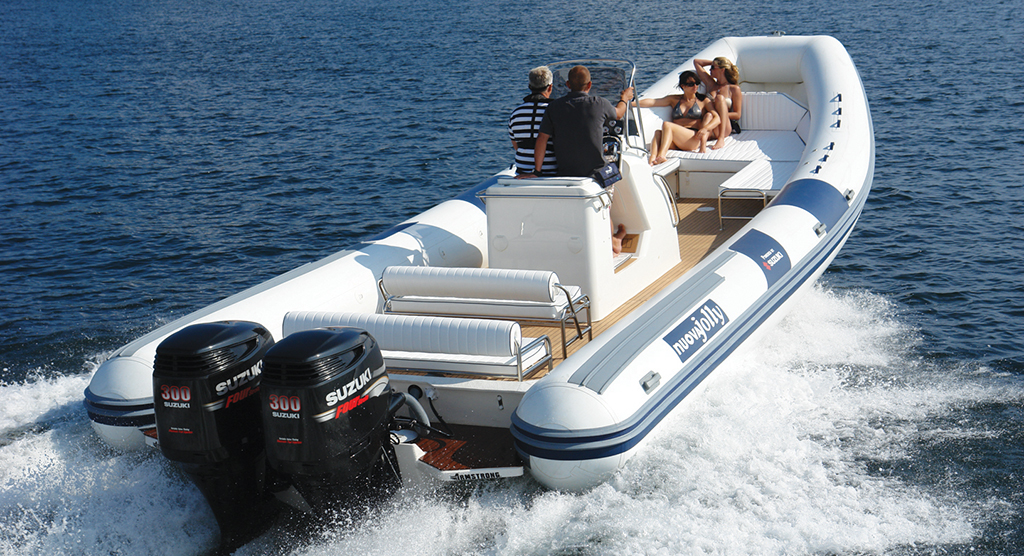Your Marine Performance Parts Professionals Help You Get the Needed Performance Boost
Stainless Marine your marine performance parts analysts would like to share with you these topics we thought would be of interest to you this month regarding 5 amazing outboard performance boosting tips.Â
The day before offshore racing's national championships in Clearwater, Florida, Dan Lawrence, throttleman for The Hulk, made what sounded like a simple statement.
âIt's all going to come down to setup,â said the 11-year veteran.
Your marine performance parts experts know that Lawrence, from Sarasota, Florida, and driver Rob Nunziato, from Dania Beach across the state, race a 32-foot Doug Wright catamaran in the Superboat Stock class. They were the 2014 national champions under the sanctioning body Super Boat ÂInternational.Â
In each of the sport's seven classes, the national championship goes to the team that accumulates the most points in a Âseason, so the recent season's finale came down to the 7th Annual Clearwater Bright House Super Boat National Championship off Clearwater Beach.
Lawrence and Nunziato definitely got the setup right on ÂSunday. They nailed the start, Âtaking a lead they would never relinquish during the 13-lap race on the calm, 3-mile course.Â
1. Don't Go Changing
Recreational boaters may have an image of these high-level racers tinkering with their engines, but that's not true. Lawrence recommends: âDo not modify your engines. Your marine performance parts specialists know you need to run them the way Mercury makes them.
Go to http://www.stainlessmarine.com/product-category/diesel-exhaust-risers-elbows/ and see how you can always find more information on marine performance parts and on 5 amaizng outboard performance boosting tips at Stainless Marine.
Every time you modify it for 2 or 3 mph, you'll lose reliability.â And note that any modifications will void the warranty.
2. Straighten Up
Lawrence sets up his boat to use less positive trim. âThe boat is much more efficient if you don't need to trim it out,â he says. Lawrence wants the noses of his outboards' lower units pointed as straight forward as possible.Â
Lawrence's competitor ÂSchoenbohm, who owns Smart Marine Group and Smart ÂMarine Service in Orlando, echoes ÂLawrence's point about trim and says, âMore than 3 degrees nose up is detrimental at 55 mph.â
3. Proper Propping
In addition to racing The Hulk, Lawrence owns a flats boat and a 28-foot Spectre center console powered by twin 250 hp Mercury outboards. After some trial and error, he found that the best propellers for the Spectre were five-blade Mercury 15-by-30-inch Maximus stainless-steel props.Â
4. Turning Tail
Regardless of the class of boat, during a race you can tell which team is running at its most efficient because the roostertail lowers as the boat accelerates. When a high-speed catamaran or stepped V-bottom runs at high speed, it has virtually no roostertail at all.Â
5. Jacked Up
To get the most out of your outboards, Schoenbohm recommends mounting them on a jack plate such as those made by CMC Marine (cmcmarineproducts.com), Bob's Machine Shop (bobsmachine.com) or T-HÂ Marine (thmarine.com).Â
A jack plate helps you get the most out of a boat because the best engine position might be between two sets of mounting holes on the transom. Brad Holbrook, a naval architect at CDI Marine Company in Glen Burnie, Maryland, and the crew chief for the Talbot Excavating team, explains why.
Gary Ballough is a 14-time world champion and 13-time national champion in offshore racing, and the throttleman from Boca Raton, Florida, won all those titles in outboard-powered boats.
âPropeller, motor height and setback are everything,â he says. âYou can make your boat pretty much do what you want if those three things are right.â
Rent-A-Thrill
If you go to watch the races in Clearwater, the area offers protected bodies of water and the open ocean. Clearwater Beach Marina and Clearwater Harbor Marina both offer slip rentals and fuel docks, and there is a public launch with six lanes at Seminole Boat Ramp.Â
The Fastest Boats in the World
Super Boat International has been sanctioning races for more than 30 years. Seven national champions, including Bob Bull's CMS Mechanical team in the Superboat Unlimited class, were crowned in Clearwater. Bull runs a two-boat team with a 48-foot MTI catamaran and a 52-foot MTI catamaran.Â
Visit us at Stainless Marine and see how we always have more information on marine performance parts and on 5 amazing tips on boosting your outboard performance.
via Ten Tips to Improve the Performance of Your Outboards
via Photo






